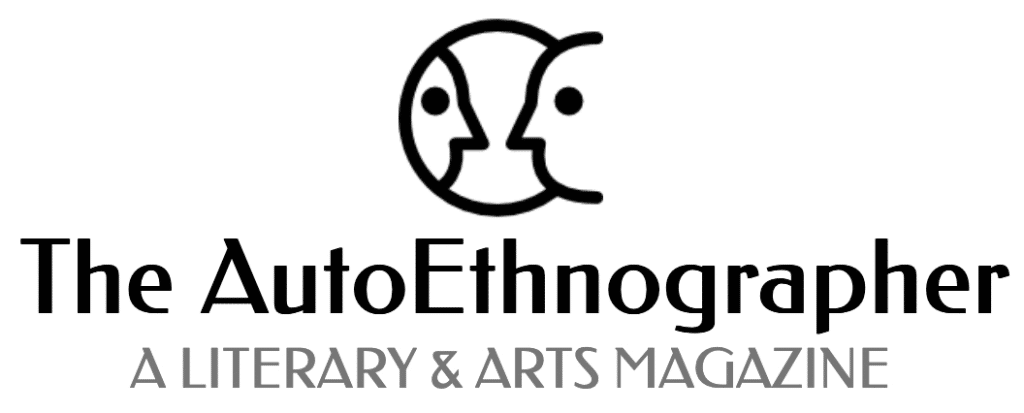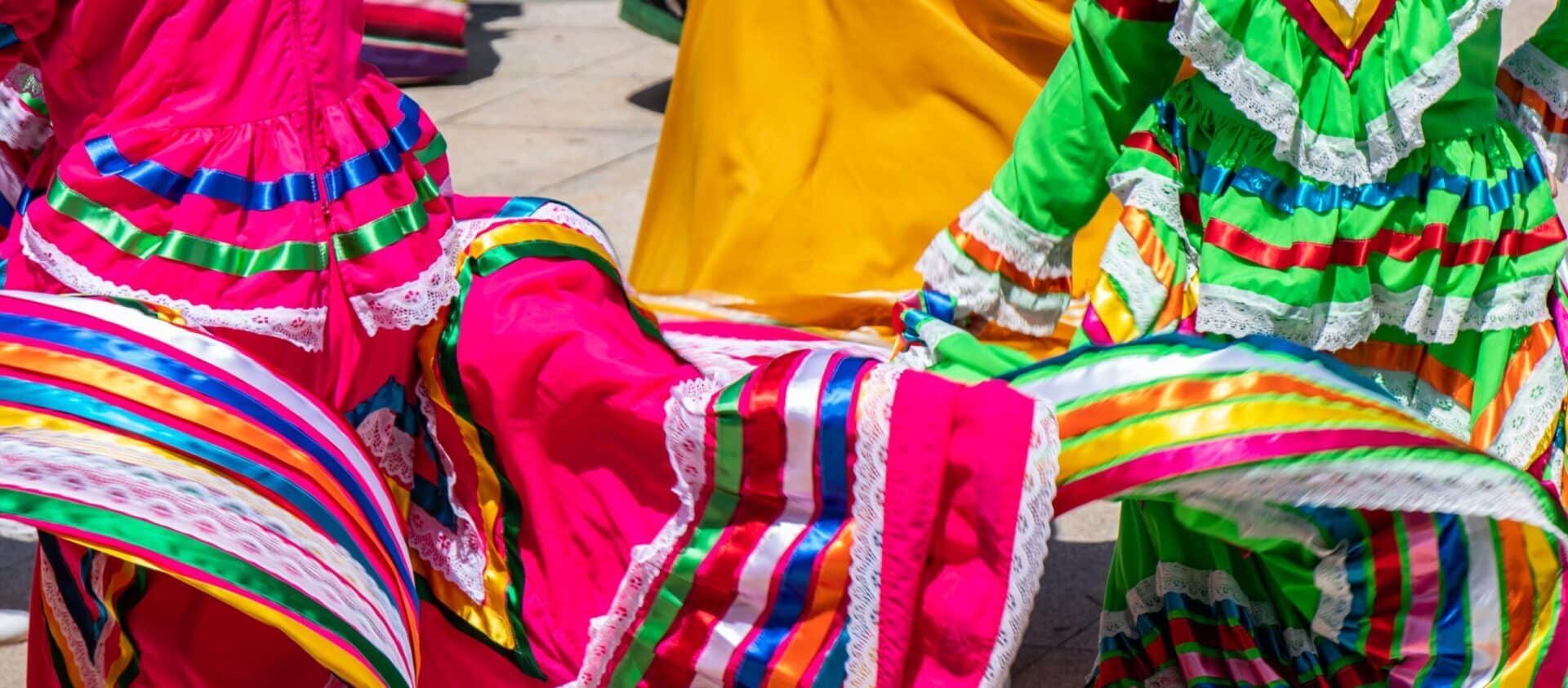SUBMISSIONS ARE CURRENTLY CLOSED
Please return to this page seasonally to learn when submissions will open again.
The AutoEthnographer Invites You to Submit Your Work!
The Autoethnographer, an award-winning, non-profit, open-access, peer-reviewed, digital literary and arts magazine, invites you t submit your work! Our independent editorial team of international artists, performers, writers, and scholars invites unpublished, unsolicited, evocative stories – sometimes textual, audio, visual, or multimodal – crafted in conjunction with autoethnography that celebrate the intersection of personal expression and cultural inquiry. Simultaneous submissions to other outlets are permissible so long as you notify us immediately should you decide to publish elsewhere.

WHAT IS AUTOETHNOGRAPHY?
Autoethnography is a qualitative research method that utilizes lived experience as evidence with which to explore cultural phenomena. It is often described as a hybrid form of ethnography & autobiography in that autoethnographers use lived experience to explore cultural issues. Autoethnography then can be a purposeful short story, a video monologue, a gallery of images, a quilt, a song, a poem, a dinner menu, artwork, and even a live performance when such expressions also celebrate or investigate cultural experiences. The following may be of assistance:
We also recommend the following article as a user-friendly primer on the basics of autoethnography:
- Autoethnography: An Overview (Adams, Ellis, & Bochner, 2011)
Consider the following discussions of autoethnography from the article above:
Autoethnographers recognize the innumerable ways personal experience influences the research process… Consequently, autoethnography is one of the approaches that acknowledges and accommodates subjectivity, emotionality, and the researcher’s influence on research, rather than hiding from these matters or assuming they don’t exist. [3] When researchers write autoethnographies, they seek to produce aesthetic and evocative thick descriptions of personal and interpersonal experience. They accomplish this by first discerning patterns of cultural experience evidenced by field notes, interviews, and/or artifacts, and then describing these patterns using facets of storytelling (e.g., character and plot development), showing and telling, and alterations of authorial voice. Thus, the autoethnographer not only tries to make personal experience meaningful and cultural experience engaging, but also, by producing accessible texts, she or he may be able to reach wider and more diverse mass audiences that traditional research usually disregards, a move that can make personal and social change possible for more people (BOCHNER, 1997; ELLIS, 1995; GOODALL, 2006; HOOKS, 1994). [14]
Adams, T., Ellis, C., & Bochner, A. (2011). Autoethnography: An overview. FQS, 12(1).

ABOUT THIS PUBLICATION
- The Autoethnographer is primarily an English language publication. However, we do welcome trans-languaging, multilingualism, and code-swithcing. If mutlilingual, the artist’s memo should provide useful context and translations that can help the reader embrace the work. If translated, we encourage submission of both the original language work and the English translation to highlight and celebrate the author’s linguistic choices.
- Each year we also invite thematic submissions in addition to our general submissions.
- Contributors may be at any stage of their creative journeys and need not have previously published work.
- Submissions are accepted 365 days of the year.
- Because our focus is literary and expressive, works that are theoretical, academic, and/or philosophical are recommended for submission to The Journal of Autoethnography (unaffiliated).
- We strongly encourage all contributors to review current articles at our magazine before submitting their work to us.
- Please review the Contract and Publication Rights at our website prior to submission; publication implies consent with this policy.
EVOCATIVE EXPRESSIONS ($25 USD/article)
Expressive works of any medium that have been created as, or in conjunction with, autoethnography. Author’s/Artist’s memos are required for submissions in this category; see below. Contact the [editor at theautoethnographer dot com] to explore alternatives. For longer works, we welcome pitches for columns and ongoing features. Likewise, we may request to post your work over a number of articles over time in order to create a more suitable audience experience. We pay $25 USD per article and request a $5 donation submission fee. Your tax deductible donation helps sustain the future of our magazine; thank you!! Response time is generally within 14 days or sooner.
WRITING
No length requirement; for longer works, we may request serialization. Please submit .doc/.docx files. Please follow APA 7 for general formatting of citations and references when applicable. Click me for more info.
POETRY
Single poems are appreciated and welcomed. We tend to give preference to a collection of poems (3-10 works), however, due to their tendency for breadth and depth. Please submit .doc/.docx files. For longer collections, we may request serialization.
MULTIMEDIA
No length requirement; for longer works or groups of images we may request serialization. Work should be presented in .wav/.mp4/.mp3/.mov or .jpeg/.png and may be externally hosted at the time of submission (send the link). HD images and video should be readily available if work is accepted. Contact the [editor at theautoethnographer dot com] if using another file format.
VISUAL ARTS
Creative arts such as photography, quilting, weaving, sculpting, dancing, potting, painting, drawing, cooking, metalwork, landscaping, make-up, tattooing, jewelry-making, fashion or home decor design, etc. should be represented visually or multimodally. HD images and video should be readily available if work is accepted. Work should be presented in .wav/.mp4/.mp3/.mov or .jpeg/.png and may be externally hosted at the time of submission (send the link). Contact the [editor at theautoethnographer dot com] if using another file format.
TEACHING/LEARNING/PERFORMING AUTOETHNOGRAPHY
This category is ONLY for submissions that reflectively explore the teaching, learning, or performing of autoethnography with the intent to educate others or to produce content that can be utilized in educational settings. For example:
- Emotional Research: Performing Autoethnography at My Late Father’s Village
- Autoethnography and Culture: Exploring Embodied Inquiry with Celeste Snowber
- Storytelling as Academic Writing: How to Embrace Creative Nonfiction
Essays, stories, lesson plans, workshops, strategies, interviews, reflections on teaching, learning, or performing autoethnography at any level. For book reviews, we’ll send you the book instead of payment and waive the submission fee. Text, audio, video, visual, multimodal submissions accepted. We pay $25 USD per article and request a $5 donation submission fee.
If accepted, the contributor may also be invited to participate in the magazine podcast and biennial print edition.
Your tax deductible donation helps sustain the future of our non-profit magazine; thank you!! Response time is generally within 14 days or sooner.
- TEACHING AUTOETHNOGRAPHY (Essays, stories, lesson plans, workshops, strategies, reflections) – No length requirement but we suggest 1000-2000 words max for readability or 30 mins max for audio or video, no minimum; for longer works, we may request serialization. You may also suggest columns and ongoing features. Please submit .doc/.docx files. Please follow APA 7 for general formatting of citations and references when applicable. Click me for more info.
- Note that creative work (poetry, fiction, nonfiction, flash, essays, and lyrics) should be submitted to the category “14-Day Response: Poetry, Fiction, Nonfiction, Flash, Essays, Lyrics”. This category is ONLY for submissions that reflectively explore the teaching, learning, or performing of autoethnography with the intent to educate others or to produce content that can be utilized in educational settings.
PREPARE YOUR WORK FOR THE WEB
Note that as we are a digital magazine, our main goal is to see your article rank highly in searches. To do this, we ask contributors to adhere to the following guidelines as closely as possible. We realize that some of the requirements may not be applicable for all submission types. We strongly encourage all applicants to prepare their work prior to submission in order to increase their chances of acceptance.
Click on any link below to learn more about developing that aspect of your work.
- Identify the keyphrase that best represents your work; this may be a single word or a brief phrase. The shorter, the better!
- This keyphrase MUST be used towards the beginning of your title, and MUST also be included in the first paragraph of your author’s/artist’s memo. If no memo is required, then it must be used in the first paragraph of your article.
- Use a title checker or headline analyzer to revise your current title as needed: https://www.monsterinsights.com/headline-analyzer/. Your title MUST score 70 or higher to be effective in a digital context.
- Avoid passive tense in your writing as much as possible; it weakens the web-friendliness of your text.
- Keep sentence length short rather than complex. Only 25% or less of your sentences should be longer than 20 words.
- Avoid starting 3 or more consecutive sentences with the same first word.
- Use headings as often as possible. Generally, no section should be longer than 300 words without a new heading.
- Paragraph lengths should be around 150 words, maximum.
- Use transition words as often as possible.
SUBMISSION PROCEDURES
- REVIEW EXAMPLES: We strongly encourage all contributors to review current articles and memos at our magazine before submitting their work to us.
- REMOVE IDENTIFYING INFO: In order to preserve a fair and impartial vetting process, submissions are refereed anonymously; please ensure that where possible, no identifying information accompanies your submission. You are encouraged to use an alias if necessary for submission purposes; this can later be changed for publication.
- PREPARE YOUR WORK FOR THE WEB: Be sure to follow all of the steps above; reach out to our editor with questions, editor at theautoethnographer dot com.
- INCLUDE DETAILED AUTHOR’S/ARTIST’S MEMO (~500 words) & KEYPHRASE: An artist’s memo is your opportunity to contextualize or explain your submission in relation to autoethnography; it answers the questions “How is this work autoethnographic?” and “Which culture(s) or cultural issue(s) is/are being addressed?” Submissions that do not include a clear, detailed memo will not be considered for publication. Following your memo, please also identify and include your selected keyphrase for your submission. Learn more HERE. e.g. Keyphrase: school sports. Note: a memo is not required for the teaching/learning/performing autoethnography category.
PAYMENT
As of January 1, 2025, we neither require a submission fee nor do we offer payment for publication.
New to autoethnography? Visit What Is Autoethnography? How Can I Learn More? Interested in contributing? View our editorial board’s What Do Editors Look for When Reviewing Evocative Autoethnography? And check out our Submissions page. View Our Team to learn about our editorial board. Please see our Work with Us page to learn about volunteering at The AutoEthnographer. Visit Scholarships to learn about our annual student scholarship competition.
Featured illustration of globe and figure in space by Quicksandala for Pixabay




